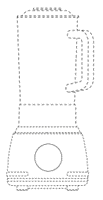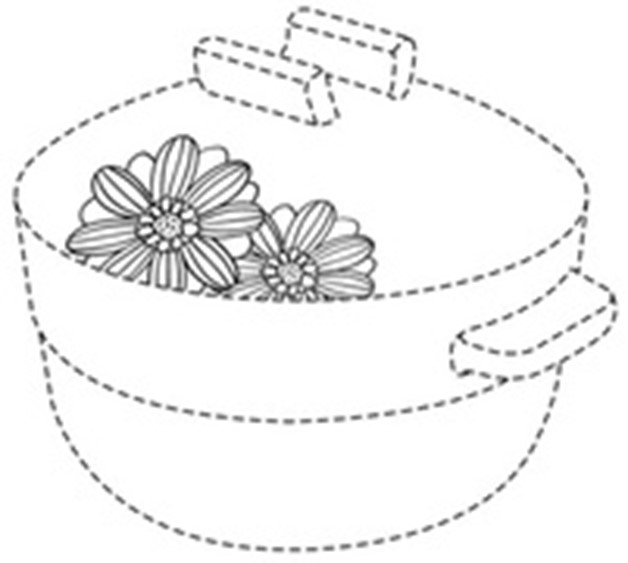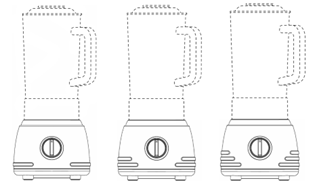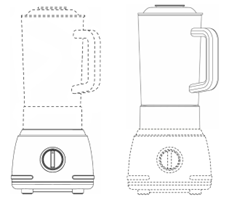What applicants need to know about partial design examination in China
Li Han, first published by WTR
• Although design patent applications are not subject to substantive examination, partial design applicants could still meet objections
• A design patent application must be limited to one design; two or more similar designs for the same product can be submitted as one application under specific circumstances
• Drawings or photographs should clearly and accurately indicate the claimed part and its position and proportion in relation to the overall product
The fourth amendment of China’s Patent Law, which entered into force on 1 June 2021, introduced the concept of ‘partial design’. Article 2.4 of the Patent Law defines ‘design’ as “a new design of the shape, pattern, or a combination thereof, as well as a combination of the color, shape and pattern, of the entirety or a portion of a product, which creates an aesthetic feeling and is fit for industrial application” (emphasis added). The revision, which makes a partial design patentable matter in China, is conducive to encouraging innovation in product details and helps China to align with international practice.
Although design patent applications are not subject to substantive examination in China, partial design applicants could still meet objections in the following aspects.
Eligible subject matter
In accordance with the Patent Law and the Patent Examination Guidelines, the claimed part in a partial design must be a new design that forms a relatively independent area within the overall product, thus constituting a relatively complete design unit. Moreover, a patentable partial design cannot be merely a pattern, nor a combination of pattern and colour on the product surface.
As shown in Figure 1, a design application seeking to protect the circular knob of a blender is clearly not a new design and will be rejected.

Figure 1
Figure 2 depicts a design application seeking to protect a randomly selected part of a bottle. The part, which does not form a relatively complete design unit within the overall product, will be rejected.

Figure 2
Figure 3 is a design application seeking to protect part of a pot lid. As the claimed part is purely a pattern design and lacks 3D effect, the application will be rejected.

Figure 3
Unity
Article 31.2 of the Patent Law provides:
A design patent application shall be limited to one design. Two or more similar designs for the same product, or two or more designs for products belonging to the same category and sold or used in sets, can be filed as one application. (Emphasis added)
In the context of partial designs, we merely discuss the first two underlined scenarios.
In general, ‘one design’ refers to a single part of the product. However, there is an exception where two or more unconnected parts on the same product can only be considered one design, provided that they have functional or design associations and form specific visual effects. Examples include the design of two eyeglass temples or two handlebars of a bicycle.
In principle, whether two or more partial designs are similar and can be filed as one design application hinges on whether:
• the overall product carrier is the same product;
• the claimed part is the same part; and
• the claimed parts are similar, with their proportion and position in the overall product being similar as well.
Figure 4 is a design application seeking to protect the handle of the blender jar and the base knob. These two parts are not physically connected and are unrelated in design and function; therefore, they will not be deemed as one design and cannot be filed as one design.

Figure 4
Figure 5 depicts three partial designs pertaining to the same product: a blender. All the claimed parts are the base, and the base designs are similar. The proportion and position of these bases in the overall product are also similar. Therefore, these three designs may be deemed as similar designs and filed as one application.

Figure 5
In Figure 6, the two partial designs pertain to the same product: a blender. However, the claimed parts are different; Design 1 is the base, while Design 2 is the blender jar. Therefore, these two designs are not similar designs and cannot be filed as one application.

Figure 6
Drawings or photographs
In practice, the submitted drawings or photographs for partial designs should clearly and accurately indicate the claimed part and its position and proportion in relation to the overall product. Ideally, six-sided orthographic projection views and one perspective view that can clearly show the claimed part should be included. If necessary, enlarged or cross-sectional views can also be submitted.
Although only protecting a certain part of the product, partial design applicants need to submit views of the overall product to indicate the position and proportion of the claimed part in relation to the overall product. Applicants are allowed to submit line drawings using a combination of solid and dashed lines, or photos or renderings using color coatings to differentiate the protected part from the rest.
It should be noted that when submitting line drawings, applicants must ensure that the claimed area is enclosed by solid lines. If the claimed area does not have a clear boundary with other areas, dash-dot lines can be used to separate them.
The practice aims to ensure the clarity and certainty of the patent rights, as only the part enclosed by solid lines (and dash-dot lines, if necessary) falls unambiguously within the scope of patent protection. On top of that, this practice also prevents applicants from including unrelated design elements in the design application, which could markedly undermine the enforceability of patent rights.
In Figure 7, the claimed part is the fork's prongs, rather than the handle. The protected area is not enclosed by solid lines; dash-dot lines should be added vertically (as indicated by the red circle) to separate the prongs and the handle.

Figure 7
Comment
The examination practice for partial design applications in China differs significantly from that in other jurisdictions. Applicants seeking to protect partial design applications in China while claiming foreign priority are advised to study the discrepancies in examination practice to better navigate the terrain.
As Article 33 of the Chinese Patent Law mandates that post-filing modifications made to a design application must not extend beyond the scope represented by the original drawings or photographs, foreign applicants are strongly recommended to formulate their filing strategies in advance and retain the services of competent local patent counsel to avoid possible pitfalls.



